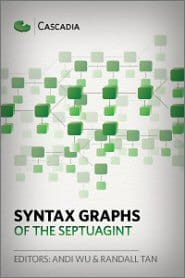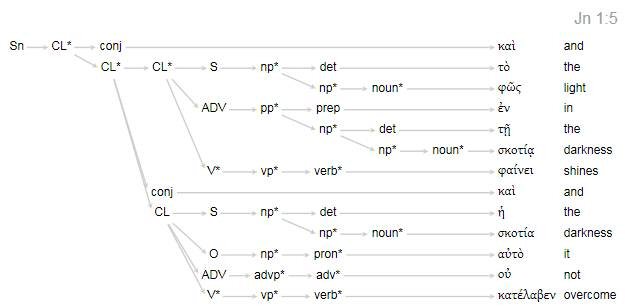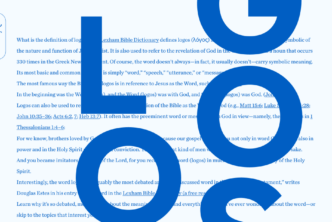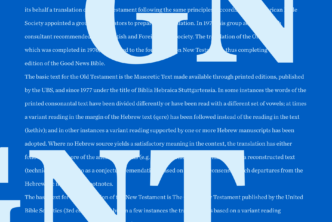Today’s guest post is from Michael Aubrey, on the marketing team.
Here at Logos, we’re always working hard to stay on the cutting edge of biblical research. We first introduced syntax databases in 2006 with the release of Libronix 3.0 and they were rightly recognized as the “new frontier” in Bible software. Mike Heiser demonstrated the vast superiority of syntax searches over morphological proximity searches with some awesome videos. And then again, three years later in November, 2009, with the introduction of Logos Bible Software 4, we did it again.
We revamped the syntax search dialog, completely changing the layout and introducing some awesome functions like dragging and dropping and introduced a brand new database: Cascadia Syntax Graphs of the New Testament.
Personally, this was the database that, as a user, I had been awaiting for many reasons.
For one, Cascadia consistently uses accessible terminology: Noun Phrase (NP), Verb Phrase (VP), and Prepositional Phrase (PP). These are labels based transparently and helpfully on Greek parts of speech: nouns, verbs, and prepositions. There’s nothing novel; nothing obscure or obtuse. This is plain vanilla, what-you-see-is-what-you-get syntax.
But more importantly, as soon as I saw the Cascadia Syntax Graphs of the New Testament and read the preface, I knew there was massive potential here—far beyond the boundaries of the New Testament. The editors, Randall Tan and Andi Wu, write:
The Cascadia Syntax Graphs of the New Testament is derived from a new dynamic Treebank project developed by the Asia Bible Society. The Greek Syntactic Treebank Project is built on the basis of a computer-readable Greek grammar, with the syntactic trees (graphs) directly generated by a parser. Manual checking and corrections are stored as data in a knowledge base to guide the parser. The syntax trees (graphs) are dynamically generated form the latest version of the grammar and knowledge base, which enables continual organic improvement and growth as the grammar and knowledge base are maintained and updated.
We humbly present this preliminary version of the syntax graphs to users of Logos Bible Software and look forward to improving and expanding it in the future.
Randall Tan
Andi Wu
November 2009
Did you catch that? The Cascadia Syntax Graphs are derived from “a computer-readable Greek grammar” (my emphasis). If what that means and why it’s significant is lost on you, let me explain.
Unlike our other syntax databases, such as Opentext.org or the Lexham Syntactic Greek New Testament, the Cascadia database isn’t annotated and created by hand, one verse at a time. Instead, the trees are all created by the computer from grammatical rules based on the structure of Koine Greek. These generated trees are then corrected by hand. Every verse, every clause, every phrase and every word is reviewed as part of this process. While this is still quite a bit of work, it leverages text already analyzed (the Greek New Testament) to assist with the process of analyzing a new corpus (the Septuagint, and also the Apostolic Fathers). The key is that because these grammar rules are continually built upon and reviewed, they may potentially to be applied to any Koine Greek text.
That’s right: any Koine Greek text.
With that realization, we said to ourselves here at Logos, “Why not? Let’s give it a try!”
Built from the very same computer-readable grammar as the Cascadia Syntax Graphs of the New Testament, these two new resources will make it possible to go beyond the New Testament in your study of the Old Testament, New Testament, Early Church, and Koine Greek. Every syntax search you create for the New Testament will also work in these databases and vice versa. For the first time, you will be able to examine syntactic structures across more than half a million words of Greek text.
Are you curious about the influence of Hebrew on the Greek of the Septuagint? Not a problem. Just pull up the Cascadia Syntax Graphs of the Septuagint alongside the Andersen-Forbes Phrase Marker Analysis!






